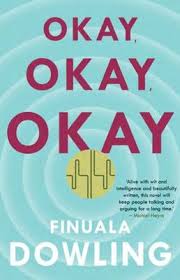 SOUNDTRACK: PALBERTA-Tiny Desk (Home) Concert #210 (May 18, 2021).
SOUNDTRACK: PALBERTA-Tiny Desk (Home) Concert #210 (May 18, 2021).
 Palberta has a great name (even if they are not from Alberta). They are an underground Philly band. I saw them a few years ago, and this attitude of relaxed yet frenetic fun was evident then as well.
Palberta has a great name (even if they are not from Alberta). They are an underground Philly band. I saw them a few years ago, and this attitude of relaxed yet frenetic fun was evident then as well.
While many of us have gotten better at using technology to feel close to our friends and collaborators over the past year, there’s still no replacement for being in the same room as someone who you swear can read your mind. That’s what it feels like to watch punk band Palberta, whose music makes magic out of repeated phrases sung in tight harmony and charmingly zany pop hooks. For its Tiny Desk (home) concert, shot on a MiniDV and a Hi8, the band crams into Nina’s Philly basement for a set that’s a testament to the group’s tight-knit collaboration and playful exuberance.
The band plays six songs in fifteen minutes (including the time it takes to switch instruments). Five songs are off of their new album Palberta5000.
The guitar-bass-drums trio is made up of Ani Ivry-Block, Nina Ryser and Lily Konigsberg, and each member sings and plays each instrument. Here, they trade places every couple of songs. The songs aren’t over-complicated but still manage to surprise at every turn – a true Palberta specialty.
The “frenzied opener” “Eggs n’ Bac'” has a wild instrumental opening which jumps into a faster indie punk sound for most of the song. All squeezed into less than 2 minutes. For this song Nina is on bass, Lily on guitar and Ani on drums. Their sound reminds me of early Dead Milkmen. Is this a Philly thing?
For “No Way” Nina stays on bass, Lily switches to drums and Ani takes the guitar. Nina sings lead with the other two giving great tight harmonies. For these songs the bass lays down the main melody and the guitars play a lot of single note melodies that run counter to the bass.
For the “queasy-yet-sentimental” “The Cow” it’s the same lineup but Lily sings lead on the first verse and Ani sings leads on the second verse. The staccato guitar style on this song is so unusual.
For the “anxious and melodic” “Big Bad Want” Lily stays on drums and sings lead, Ani switches to bass and Nina gets the guitar. Ani plays some chords on the bass and you can really see how the guitar plays a repeated pattern while the bass takes more of a lead role. The call and response for this chorus is really tight. Nina even plays a guitar solo.
“Sound of the Beat” (from 2018’s Roach Goin’ Down) is “a sweet testament to grooving” and gets a full lineup switch. Nina sits behind the kit, Ani is back on guitar and Lily is on bass. This song is really catchy–surely the catchiest thing in this set. It has a feeling like early Sleater-Kinney. All three sing harmony lead.
They end with “Before I Got Here” with same line up. It’s one of their longer songs at over three minutes. Ani and Lily switch off lead vocals for the fast verses. After a minute or so, the tempo shifts and the last two minutes are a slow instrumental jam with Ani playing a guitar solo while Lily keeps the melody on bass.
It’s tempting to try to see if one of them is “better” at one instrument or another, but they are all clearly very comfortable on each instrument. This leads to endless possibilities for songs.
[READ: May 1, 2021] Weird Women
“Introduction” by Lisa Morton and Leslie S. Klinger
Why summarize when they say what this book is about so well
Any student of the literary history of the weird or horror story can hardly be faulted for expecting to find a genre bereft of female writers, at least in its first two centuries. …
Yet there were women writing early terror tales—in fact, there were a lot of them. During the second half of the nineteenth century, when printing technologies enabled the mass production of cheap newspapers and magazines that needed a steady supply of material, many of the writers supplying that work were women. The middle classes were demanding reading material, and the plethora of magazines, newspapers, and cheap books meant a robust marketplace for authors. Women had limited career opportunities, and writing was probably more appealing than some of the other avenues open to them. Though the publishing world was male-dominated, writing anonymously or using masculine-sounding names (such as “M.E. Braddon”) gave women a chance to break into the market. It was also still a time when writers were freer than today’s writers to write work in a variety of both styles and what we now call genres. A prolific writer might pen adventure stories, romantic tales, domestic stories, mystery or detective fiction, stories of the supernatural—there were really no limits.
Spiritualism—the belief that spirit communication could be conducted by a medium at a séance, and could be scientifically proven (despite continued evidence to the contrary)—was widely popular, and so one might expect to find that many writers of this period were producing ghost stories. But ghost stories were just one type of supernatural story produced by women writers at this time. Women were also writing stories of mummies, werewolves, mad scientists, ancient curses, and banshees. They were writing tales of cosmic horror half a century before Lovecraft ever put pen to paper, and crafting weird westerns, dark metaphorical fables, and those delicious, dread-inducing gems that are simply unclassifiable.
ELIZABETH GASKELL-“The Old Nurse’s Story” (1852)
Gaskell wrote primarily about social realism, but she also wrote this creepy story. The set up of this story is fascinating. A nursemaid is telling a story to her new charges. The story is about their mother–from when the nursemaid used to watch her. The story seems like one of simple haunting–strange things are afoot at this mansion. But there’s a lot more going on. I love the way everyone is so calm about the broken pipe organ playing music day and night. Way back then, the children’s mother saw a girl outside and went to play with her. But it was winter and when they found the child, alone, under a tree, there was no evidence of anyone else being there with her. That’s when we learn the history of this house and the way the owner treated his daughters. The ending gets a little confusing, but when you unpack it, there’s some wonderful deviance at hand. (more…)


 GlobalFEST is an annual event, held in New York City, in which bands from all over the world have an opportunity to showcase their music to an American audience. I’ve never been, and it sounds a little exhausting, but it also sounds really fun.
GlobalFEST is an annual event, held in New York City, in which bands from all over the world have an opportunity to showcase their music to an American audience. I’ve never been, and it sounds a little exhausting, but it also sounds really fun.